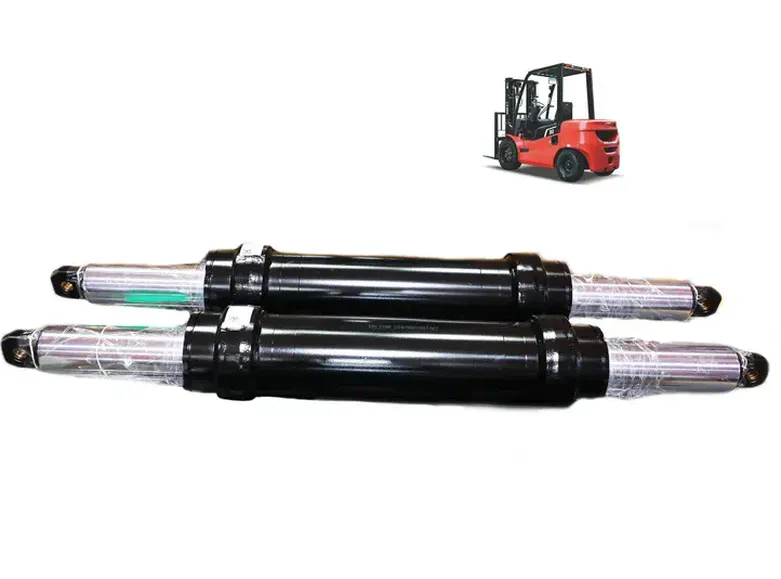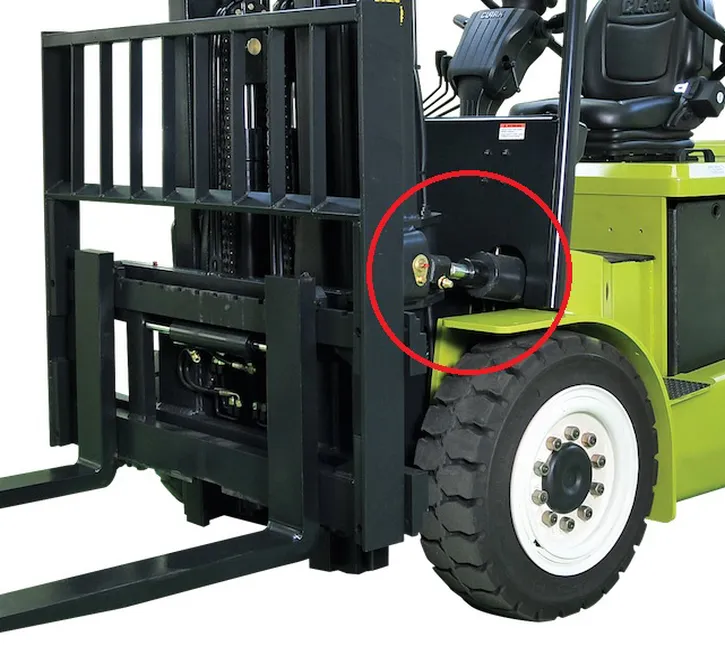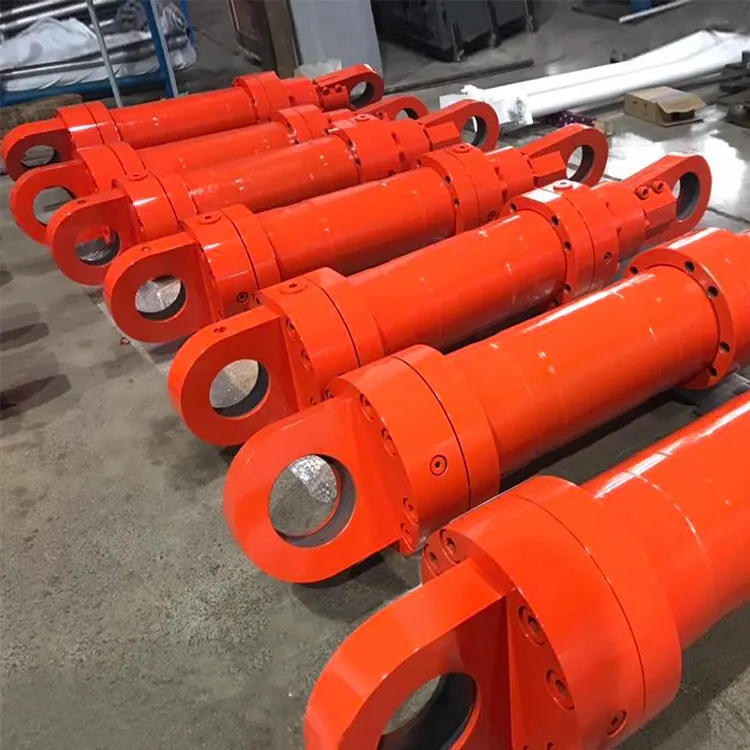Product Description
Product Description
HSG Engineering hydraulic cylinder
HSG series double-acting single-rod piston hydraulic cylinder is an actuator for reciprocating linear motion in hydraulic system. It has the characteristics of simple structure, reliable operation,convenient assembly and disassembly easy maintenance various installation and connection methods. and can be equipped with buffer devices. According to the different connection methods of the piston rod there are 4 categories and 45 types of specifications and models.
Product Parameters
| Way of action | Double acting /Single acting | ||||
| MPa Pressure level | 0-16MPa | 16-21MPa | 21-25MPa | 25-40MPa | |
| Cylinder D. range | Φ40~Φ1500mm | ||||
| Travel range: | 0~≤15m | ||||
| Ambient temperature: | -20ºC~+80ºC, +80ºC~+350ºC | ||||
| Work medium | Anti-wear hydraulic oil Water glycol fire resistant hydraulic oil |
||||
| Cylinder head form | Extermalthread connection Internal card key connection Flangeconnection |
||||
| Installation form | Earring connection | Pin connection | Flange connection | ||
Detailed Photos
Product name:HSG140/90-500
Action type:Double acting
Cylinder bore diameter:140mm
Piston rod diameter:90mm
Cylinder stroke:500mm
Working pressure:16MPa
Working temperature:-25~80ºC
Mounting type:Eyelet mounting
Pushing force: 20tons
Cylinder materials:45 steel
/* May 10, 2571 16:49:51 */!function(){function d(e,r){var a,o={};try{e&&e.split(",").forEach(function(e,t){e&&(a=e.match(/(.*?):(.*)$/))&&1

How does a forklift hydraulic cylinder contribute to energy-efficient lifting?
A forklift hydraulic cylinder plays a significant role in facilitating energy-efficient lifting operations. Here's an explanation of how it contributes to energy efficiency:
1. Power Transfer:
The hydraulic cylinder efficiently transfers power from the hydraulic system to the load-bearing structure of the forklift. By converting hydraulic pressure into linear force, it allows the forklift to lift heavy loads with minimal energy expenditure.
2. Load Balancing:
Hydraulic cylinders can be designed to provide load balancing capabilities, ensuring that the lifting force is evenly distributed across multiple cylinders. This feature allows for stable and efficient lifting, as each cylinder shares the load, reducing the strain on individual components and optimizing energy usage.
3. Controlled Fluid Flow:
The hydraulic system of a forklift, including the hydraulic cylinder, operates based on precise control of fluid flow. By regulating the flow rate and direction of the hydraulic fluid, the operator can control the speed and force of the cylinder's extension and retraction. This level of control minimizes energy waste by avoiding sudden or excessive movements.
4. Regenerative Systems:
In some advanced forklift designs, regenerative systems can be incorporated into the hydraulic circuit. These systems capture and reuse energy that would otherwise be dissipated as heat during the lowering of loads. The regenerated energy can be stored and used to power other components of the forklift, contributing to overall energy efficiency.
5. Proper Maintenance:
Maintaining the hydraulic cylinder in good working condition is crucial for energy-efficient lifting. Regular inspection, cleaning, and lubrication of the cylinder and its seals help reduce friction and prevent fluid leakage. Well-maintained cylinders operate with improved efficiency and minimize energy losses.
By employing these energy-saving techniques, a forklift hydraulic cylinder enhances the overall energy efficiency of the lifting process. It enables controlled power transfer, load balancing, regulated fluid flow, and, in some cases, the utilization of regenerative systems. Proper maintenance further ensures optimal performance and energy conservation.
In summary, a forklift hydraulic cylinder contributes to energy-efficient lifting by efficiently transferring power, providing load balancing capabilities, enabling controlled fluid flow, and potentially incorporating regenerative systems. Its proper maintenance enhances energy conservation and overall lifting efficiency.

Can hydraulic cylinders be used in cold storage forklifts?
Yes, hydraulic cylinders can be used in cold storage forklifts. Cold storage forklifts, also known as freezer forklifts or refrigerated forklifts, are specifically designed to operate in cold environments such as cold storage warehouses or freezer rooms. Hydraulic cylinders play an essential role in the functionality of these specialized forklifts. Here's an explanation of how hydraulic cylinders are used in cold storage forklifts:
Hydraulic cylinders are utilized in cold storage forklifts in the following ways:
1. Mast Lifting:
Similar to standard forklifts, hydraulic cylinders are used to lift and lower the mast in cold storage forklifts. The mast is the vertical assembly that houses the lifting mechanism and forks. Hydraulic cylinders provide the power and control for vertical movement, allowing the forklift to lift and lower loads in cold storage environments.
2. Reach and Extend:
Cold storage forklifts may have telescopic masts or extendable booms to reach and handle loads in high storage racks. Hydraulic cylinders are responsible for extending and retracting the telescopic sections of the mast or boom. This feature enables the forklift to reach and handle pallets or goods located at varying heights in cold storage areas.
3. Load Manipulation:
Hydraulic cylinders contribute to load manipulation in cold storage forklifts. These cylinders are used to control attachments such as side shifters, fork positioners, or clamp mechanisms. By utilizing hydraulic power, the cylinders allow for precise adjustments and positioning of the attachments, facilitating efficient handling of loads in cold storage environments.
4. Operator Controls:
Cold storage forklifts are equipped with operator controls that enable the adjustment and operation of hydraulic cylinders. The forklift operator can use the control levers or buttons within the cabin to activate and control the hydraulic cylinders, adjusting the lifting, reaching, or attachment functions as needed.
5. Cold-Resistant Design:
Hydraulic cylinders used in cold storage forklifts are often designed to withstand low temperatures. They may incorporate special seals, lubricants, or materials that can withstand the cold environment without compromising performance. This ensures the reliability and functionality of the hydraulic system in sub-zero temperatures.
In summary, hydraulic cylinders are integral components of cold storage forklifts, enabling mast lifting, reach and extension, load manipulation, and operator control functions. These cylinders are designed to operate in cold environments and contribute to the efficiency and effectiveness of material handling operations in cold storage warehouses or freezer rooms.

What are the Safety Considerations When Using Forklifts with Hydraulic Cylinders?
When using forklifts with hydraulic cylinders, it is essential to prioritize safety to prevent accidents, injuries, and property damage. Hydraulic systems and cylinders are integral components of forklifts, and understanding and implementing safety considerations is crucial. Here are important safety considerations to keep in mind:
- Operator Training and Certification:
- Regular Inspections and Maintenance:
- Load Capacity and Stability:
- Proper Load Positioning and Handling:
- Avoiding Overextension and Collisions:
- Proper Use of Controls:
- Clear Communication and Awareness:
- Emergency Procedures:
Operators must receive thorough training and certification specific to forklift operations. Proper training should cover the safe operation of hydraulic systems and cylinders, including understanding the controls, load capacity, stability, and safe maneuvering techniques. Well-trained operators are more likely to handle hydraulic cylinders safely and minimize the risk of accidents or misuse.
Forklifts and their hydraulic systems, including cylinders, should undergo regular inspections and maintenance to ensure they are in proper working condition. Inspections should identify any signs of wear, leaks, or damage, and maintenance tasks such as lubrication and component replacements should be performed as recommended by the manufacturer. Well-maintained hydraulic cylinders contribute to safe and reliable forklift operations.
Understanding and adhering to the forklift's load capacity limitations is crucial for safe operation. Overloading a forklift can lead to instability and potential tip-overs. Operators should be aware of the load capacity rating and ensure that loads are properly balanced and secured. Maintaining the forklift's stability, especially when using the hydraulic cylinder to lift or lower loads, is essential to prevent accidents caused by tipping or loss of control.
Safe load positioning and handling contribute to overall forklift safety. Operators should ensure that loads are positioned correctly on the forks, centered and secure, to prevent them from shifting or falling during transport. When using the hydraulic cylinder to raise or lower loads, operators should do so gradually and avoid sudden movements that may destabilize the forklift or cause the load to swing uncontrollably.
Overextending the hydraulic cylinder beyond its recommended limits can lead to failure or instability. Operators should be aware of the maximum extension and retraction limits of the cylinder and avoid exceeding them. Additionally, operators must exercise caution to prevent collisions with objects or structures, as impacts can damage the hydraulic cylinder, compromise its integrity, and pose safety risks.
Operators should be familiar with the forklift's hydraulic control system and use the controls properly. This includes understanding the functions of each control, such as raising, lowering, tilting, or extending the forks, and using them with precision and care. Mishandling the hydraulic controls can result in sudden movements or unintended actions, potentially causing accidents or injuries.
Clear communication and situational awareness are essential for safe forklift operations. Operators should maintain clear visibility, use mirrors or cameras if available, and be aware of their surroundings to avoid collisions with pedestrians, other vehicles, or obstacles. Effective communication with co-workers and signaling to indicate forklift movements can help prevent accidents and ensure a safe working environment.
Operators should be familiar with emergency procedures and know how to respond in case of malfunctions, leaks, or other emergencies involving the hydraulic cylinder. Proper training should cover emergency shutdown procedures, reporting protocols, and evacuation plans to ensure a timely and coordinated response that minimizes risks to personnel and property.
By prioritizing operator training, regular inspections, adherence to load capacity limits, proper load handling, cautious control usage, and clear communication, forklifts with hydraulic cylinders can be operated safely and efficiently. Implementing these safety considerations helps reduce the risk of accidents, protect personnel, and maintain a secure work environment.
<img src="https://img.jiansujichilun.com/img/hydrauliccylinders/hydrauliccylinders-l1.webp" alt="China Standard Double Acting/Single Acting Small Bore Welded Hydraulic Piston Cylinder for Forklift vacuum pump design "><img src="https://img.jiansujichilun.com/img/hydrauliccylinders/hydrauliccylinders-l2.webp" alt="China Standard Double Acting/Single Acting Small Bore Welded Hydraulic Piston Cylinder for Forklift vacuum pump design ">
editor by Dream 2024-10-08